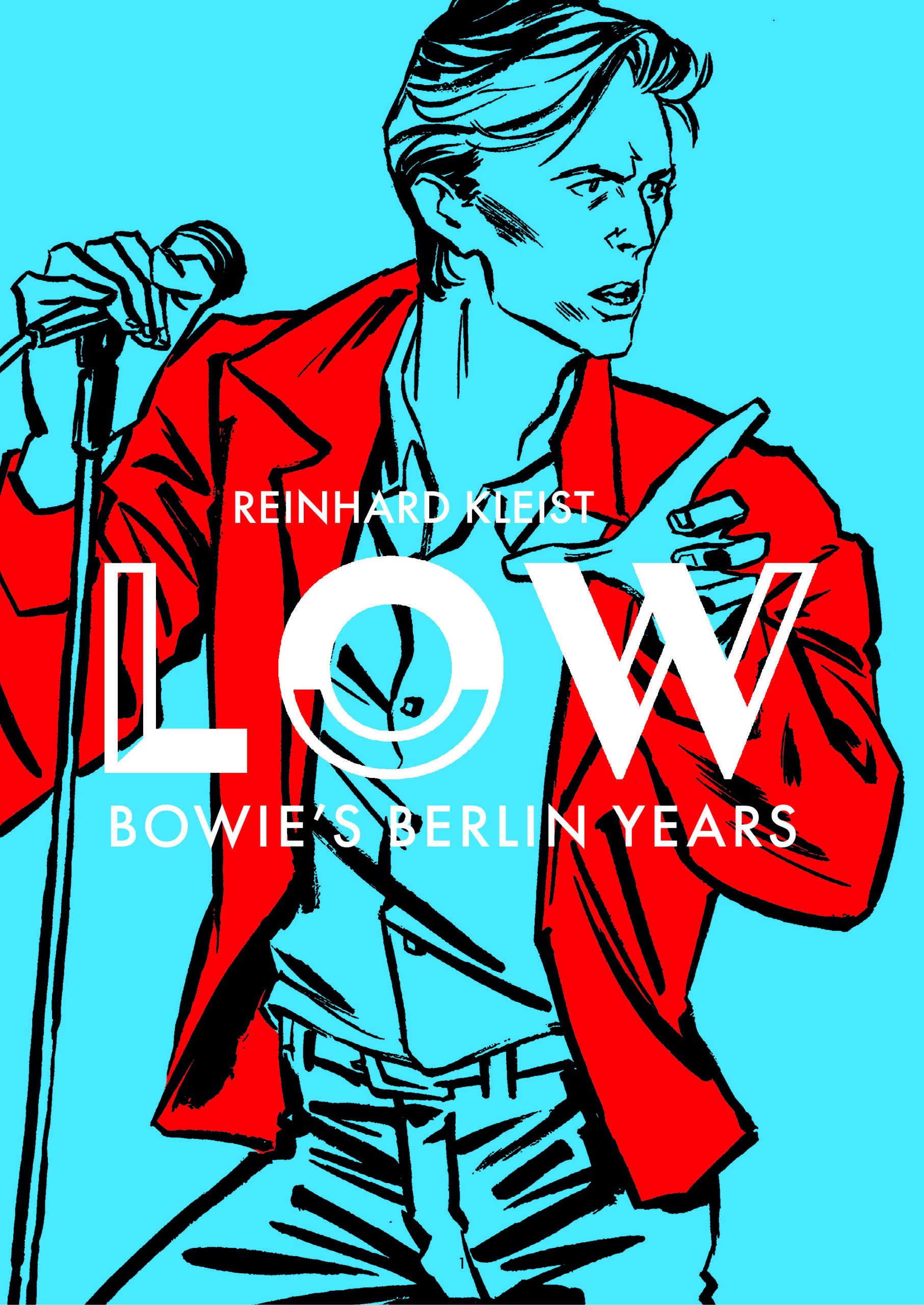Since David Bowie’s death, in January 2017, the bookshelves have started to groan under the weight of new books detailing every detail of his life from every angle imaginable – trust me, I’ve got almost ninety of them sat in front of me. But the arrival of Reinhard Kleist’s second, and apparently final, graphic novel, his first was the hugely entertaining Starman back in 2023, adds an entertaining take to the traditional Bowie biography. Kleist is no stranger to graphic biographies, having published award-winning books on Nick Cave and Johnny Cash, amongst others, which are well worth checking out.
So, what makes this Bowie book any different you ask? Well, clearly, it’s a graphic biography but it avoids the standard pitfall of trying to cover a huge career, in any depth, in one publication. Instead, Kleist has chosen one key period, 1976-78, and imbued it with colour and humour, as well as a huge amount of detail. Whilst some Bowie biographies race through the 1976-1978 period of Bowie’s career, having spent hundreds of pages discussing his early 70’s period and eager to get to his 80’s commercial peak, Kleist is brave and focusses on one of Bowie’s most creative periods. “Oh yeah, the Berlin trilogy” I hear you call. Well, this period is so much more than that reductionist view. Yes Bowie recorded his Low, “Heroes” and Lodger albums, but he also collaborated/produced, and co-wrote several tracks on, Iggy Pop’s most famous albums The Idiot and Lust for Life; toured as Pop’s flat cap wearing keyboard player; released the seminal The Man Who Fell to Earth film and undertook the huge Stage tour – pretty good going for an artist with a serious drug addiction. Oh, and he also made some pretty fine paintings in this period as well!
LOW starts its story in the aftermath of Bowie’s groundbreaking Station to Station tour, in America, and his desire to break free from the frantic madness and ravages of LA, and drugs, and escape, with Iggy Pop, to Berlin – how this was meant to help either of them kick drugs, and whether they really did, is a mystery. The book follows Bowie’s journey through a divided Berlin, his creative and personal friendship with Iggy Pop and more interestingly his relationship with the cabaret artist and drag icon Romy Haag. One of the most interesting angles about LOW is the focus on Bowie’s experience of living in a divided city and how this informed his art, not just his music but his paintings as well.
Kleist manages to achieve what many in recent years have failed to do, to find a story behind a period of Bowie’s life that sheds light on Bowie as a man, not a superstar. Yes, sure he made some great and influential records during that period, but he also painted portraits of his friends and wandered a broken city, whilst living in a relatively small and non-descript apartment – a far cry from his time in America. Kleist takes the reader on a colourful tour of not only Bowie and Iggy’s growing friendship and the creative peaks that developed from this, but of Berlin as a city on the brink with its burgeoning music, drag, club and drug scenes. He takes us deep into the recording session for “Heroes” at the, now legendary, Hansa Studios which literally looked out onto the wall. Bowie was already well known for seeking out new music and his time in Berlin was no exception. Kleist details the influence of a number of German bands on Bowie’s writing and recording whilst recognising how his dreams of a future propelled him forward but that underlying all of this was the drag of his past, particular Ziggy Stardust, which would often not let go of him.
It is a shame this is the last of Kleist’s books on Bowie, as with both he has found an engaging way to tell the story with a new twist and approach. This isn’t the best Bowie book out there but sits comfortably in my top-ten.
LOW – Bowie’s Berlin Years by Reinhard Kleist is published by SelfMadeHero, 16th May 2025




